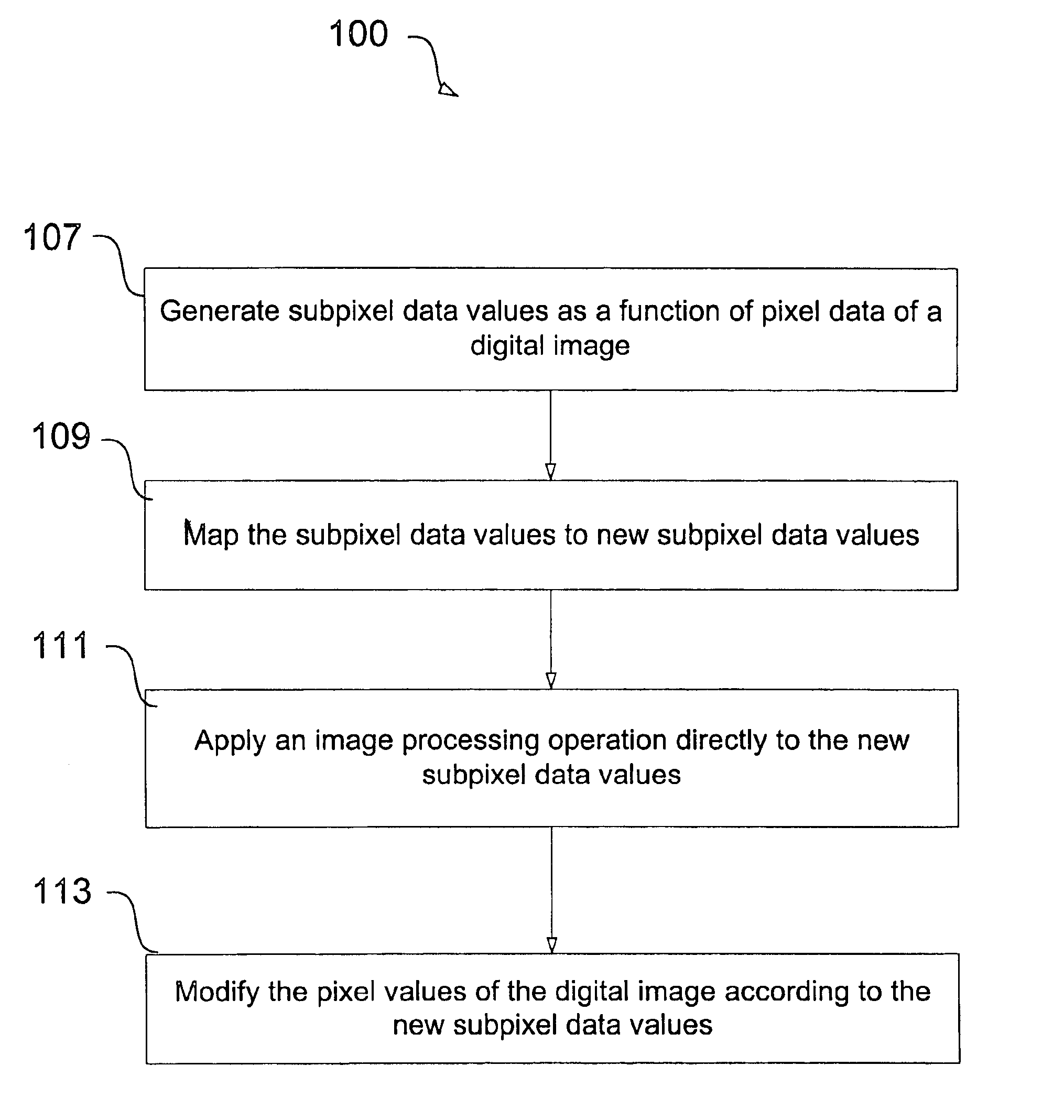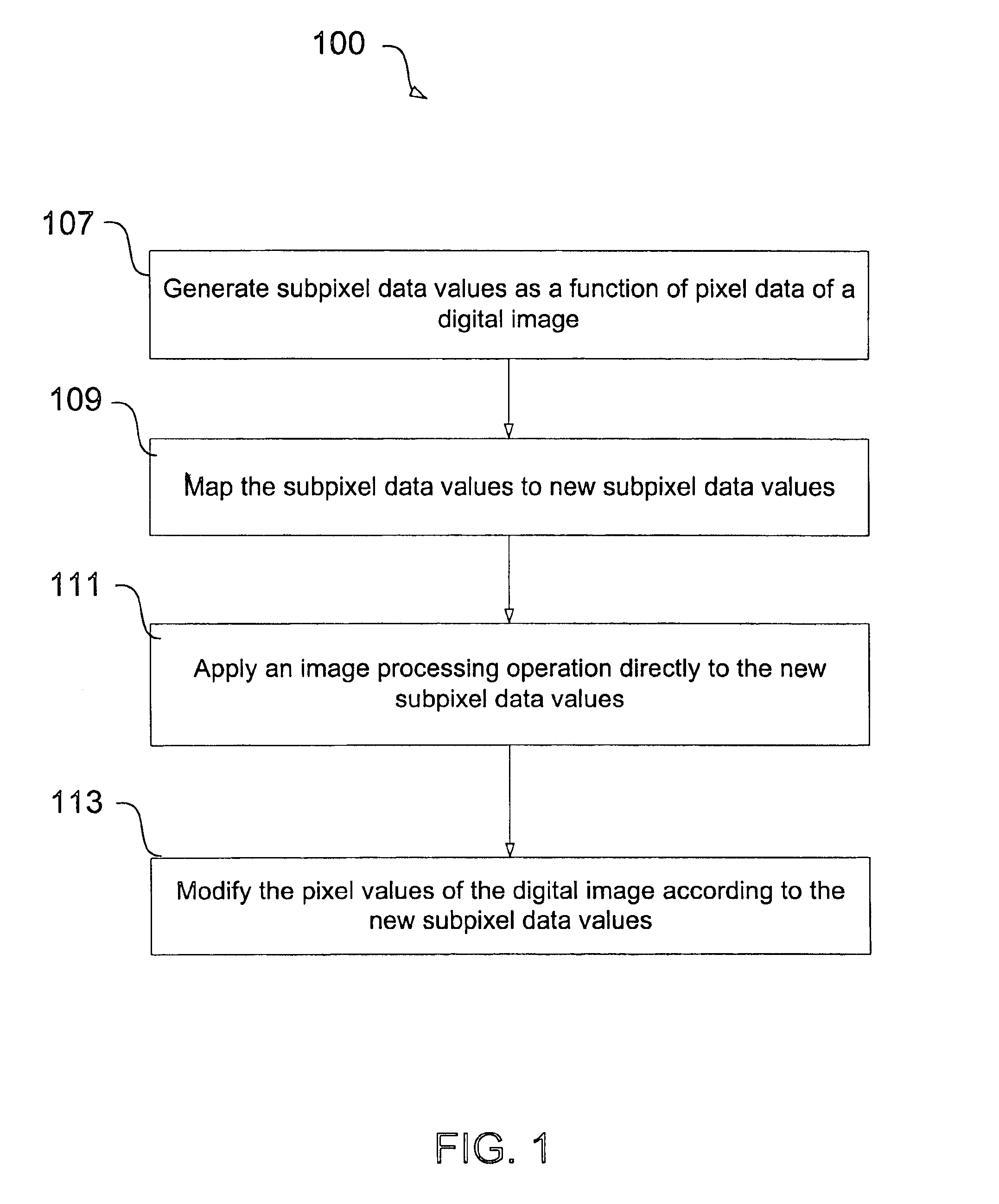Reducing aliasing artifacts when shaping a digital image
a digital image and artifact technology, applied in the field of digital image processing and techniques for reducing aliasing artifacts, can solve problems such as displaying aliasing artifacts, and achieve the effect of reducing aliasing artifacts
- Summary
- Abstract
- Description
- Claims
- Application Information
AI Technical Summary
Benefits of technology
Problems solved by technology
Method used
Image
Examples
Embodiment Construction
FIG. 1 is a flow chart illustrating one embodiment of a process 100 suitable for implementation in a computer program application to reduce aliasing artifacts that often result when shaping a digital image, such as a small digital matte. Generally speaking, image-processing tools often truncate pixel data by throwing away fractional pixel data generated by an image processing operation. For example, when applying a blur, a halo, a glow or a shadow to a digital image such as a digital matte, an image-processing tool typically truncates each pixel to an integer value. In one implementation, contrary to these approaches, process 100 retains the fractional pixel data produced by prior image processing operations.
In order to shape the digital image, process 100 generates one or more sets of “subpixel” data values, also referred to as a subpixel patch, as a function of the pixel data within a region of interest of the digital image (step 107). Each subpixel value is a highresolution value...
PUM
 Login to View More
Login to View More Abstract
Description
Claims
Application Information
 Login to View More
Login to View More - R&D
- Intellectual Property
- Life Sciences
- Materials
- Tech Scout
- Unparalleled Data Quality
- Higher Quality Content
- 60% Fewer Hallucinations
Browse by: Latest US Patents, China's latest patents, Technical Efficacy Thesaurus, Application Domain, Technology Topic, Popular Technical Reports.
© 2025 PatSnap. All rights reserved.Legal|Privacy policy|Modern Slavery Act Transparency Statement|Sitemap|About US| Contact US: help@patsnap.com



